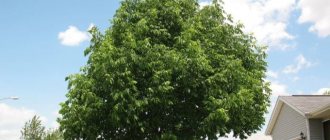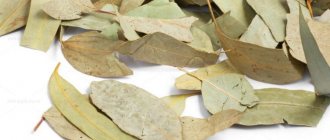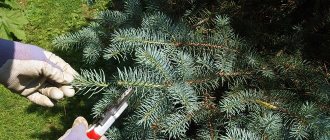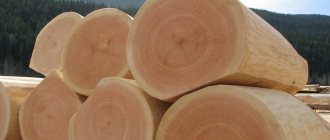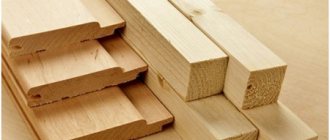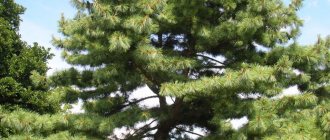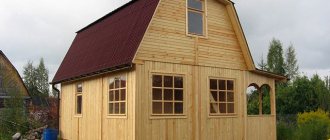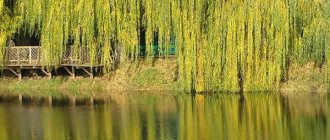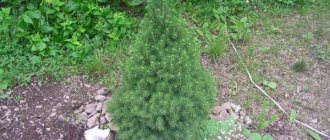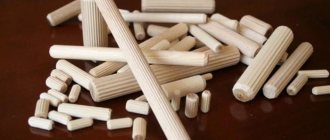Siberian cedar, belonging to the genus Pine, is a huge evergreen giant that can reach an age of 500-850 years. It is cultivated both for decorative purposes and for the extraction of seeds - nuts with high nutritional value. Cedar pine can grow in a wide variety of conditions. This opens up wide opportunities for cultivating it in your own garden plot.
Description of cedar pine
The evergreen tree is related in spirit to Korean cedar and other crops included in the informal group of cedar pines. It has become widespread in Western Siberia, the Urals, Kazakhstan, the Mongolian steppes, and China. Siberian pine pine can form pure forests - cedar trees or be combined with other coniferous representatives. It loves sandy and clayey soil, although it can also be found on rocky soil and in swamps. It is frost-resistant, but does not grow in areas with permafrost.
It tolerates shade well, but is demanding on certain growing conditions, such as heat, environmental humidity and soil. Its soft, durable and light wood with a characteristic odor is used in the production of furniture and stationery, and the nuts are widely used in cooking, medicine, and they also feed many animals in the taiga - chipmunks, sables, bears, and various birds.
What does cedar pine look like?
The girth of the trunk reaches 2 m. This is what a cedar pine is like, the height of which is 35-44 m. It has a dense multi-peaked crown with powerful branches. The trunk is erect and smooth, over time it becomes covered with scaly bark with cracks. The root system of the cedar pine has a short central core, from which powerful shoots branch off, running at a depth of 2-3 m. They are responsible for the stability of the tree.
The needles of this culture grow in bunches. Each has 5 needles. The white coating on cedar pine is its main feature. Due to the short growing season, the tree grows extremely slowly. Cones are formed at the base of elongated shoots. They are large and elongated in the culture, and have the appearance of an egg. It takes 14-15 months for them to mature. They fall off entirely in September, without opening. Each cone contains from 30 to 150 dark brown nuts.
How does pine pine bloom?
The flowers usual for deciduous trees do not appear on coniferous representatives. In mid-spring, when the air temperature reaches +10°C, small male cones, similar to spikelets, microstrobiles, appear on the branches. This is the flowering of the cedar pine. The spikelets begin to dust around June, “fertilizing” the female cones - megastrobiles. Such flowers have no fragrance and do not need pollinating insects.
When does cedar pine begin to bear fruit?
You can enjoy tasty and nutritious nuts 60 years after rooting - that’s when the cedar pine bears fruit. Sometimes this happens later. Abundant seed formation is repeated every 3-10 years. The cones take a long time to ripen - 14-15 months, falling off the next season, in September. In a year, up to 12 kg of valuable and nutritious product, rich in biologically active substances, can be collected from one crop.
Most of all it contains phosphatidic phosphorus, as well as various vitamins and mineral salts: iodine, manganese, copper, cobalt, zinc. Nut protein is rich in amino acids essential for the human body. It is worth noting that this is also a good source of polyunsaturated fatty acids. The most productive are broad-grass cedar forests, but sphagnum varieties produce the least fruit.
Flowering time
Pine blooms in May, and cedar in June. Of course, this is not flowering in the literal sense, because trees are gymnosperms. For simplicity, the male cones that people observe are called “flowers,” and pollen grains ripen in them. Pine pollen is so light that it can fly thousands of kilometers. Over time, the cone changes color - it becomes yellow, pinkish.
Find out how to best use pine in landscape design.
The female sprouts are located a little further from the male ones, on different branches. This flowering occurs every year, and the seeds ripen in early autumn of the next year. The cone overwinters. And in March or April, at +10°C, the cones open and the seeds fly out. In its natural environment, pine bears fruit no earlier than 10 years of age.
Cedar seeds ripen no earlier than a year after the appearance of male cones. In June of the year following pollination, pollen begins to fertilize. In September the cone ripens. It turns out that the tree harvests once every two years. In the fifth year the yield is better, and after another 10–15 years the number of cones is very large. Seed production begins late - from 25–40 years of age. And in old trees, fruiting declines.
What is the difference between cedar and cedar pine?
Both of these crops belong to the cedar pine group. However, cedar is a genus that includes Atlas cedar, Lebanese cedar, and Himalayan cedar. Cedar pine is a tree belonging to the genus Pine. Actually, this is the closest relative of the well-known Scots pine. The main difference between these two crops is the cones. In cedar they are erect. They ripen for 2-3 years and crumble during the cold season. The seeds contain resin, have a triangular shape, thin skin and large wings. Pine cones do not have these.
There are differences in other criteria:
- According to the location of the needles
. Both cultures have 5 needles in a bunch, but cedar needles are arranged spirally. - Length of needles
. In pine they are shorter - up to 4-6 cm, while in cedar they grow up to 14 cm. - Rigidity
. Pine has harder needles, cedar has softer needles. - Growth rate
. Cedar stretches faster. - Edibility of seeds
. Cedar trees are not suitable for food.
Places of growth
Cedars grow in the subtropics of the mountainous Crimea, the Mediterranean and the Himalayas. Depending on the name of the area where they grow, they are divided into types: Himalayan, Crimean, Lebanese, etc.
Pines grow more in the temperate subtropical climates of North America and Eurasia. In total, scientists identify 200 varieties of this coniferous plant. Both cedar and pine are evergreen trees. Different natural conditions also create a variety of plant forms, from bushes to trees with huge crowns.
Types of cedar pines
There are many different types of cedar pine. The most popular are:
- Cedar pine Glauka compacta
. This is the brainchild of Dutch breeders, which does not exceed 2.5 m in height, and the crown volume is about 1 m. This dwarf, slow-growing species with a bluish crown is most often chosen for cultivation on its own plot. It takes root well in urban environments and lives up to 1000 years. - Cedar pine Aurea
. This is a delightful golden variety bred by German breeders. It has a vertical shape and a slow growth rate. It tolerates frost and shade well and can grow on compacted soil. By the age of 10, it reaches 1.3 m in height with a crown diameter of 0.85 m. After 20 years of life, you can collect fruits, but there will not be a large harvest of nuts. - Cedar pine Morris blue
. It is not difficult to guess that this tree has beautiful blue needles, distinguished by silver. Reaches a height of 3.5 m with a diameter of 1.8 m. Growth is 20 cm per year. Capricious culture. It will take a lot of effort to grow it in an urban environment. It is very demanding of clean air and sun, and does not tolerate stagnant water.
Differences in lifespan
Cedar is a true old-timer. Reaches 500 years of age, and sometimes 800 years of age. There are suggestions that such a tree can live for a thousand years. And his relative is more modest - on average, her lifespan is 400 years.
Important! The density of cedar wood is less than that of pine (the former resembles cork), and the drying out of the material is extremely low. Cedar is warmer and more reliable.
Of course, there are also ancient representatives, for example, the intermountain bristlecone pine, growing in the USA. It is located at a high altitude (3 thousand meters above sea level), and its age is respectable - it is 4850 years old. Even the name of the tree is appropriate - Methuselah. But this is a different type of family.
In Japan there is a tree whose age is unknown, but at least 2000 years old. It is even believed that the Japanese old-timer is about 7,000 years old. However, these species are special and do not germinate in Russia. In any case, it turns out that cedars - namely real ones - are breaking records for lifespan.
Planting cedar pine
For landscaping your site, choose 9-11 year old seedlings that have a well-developed root system, a thick trunk and a healthy, green crown. Planting Siberian cedar begins with choosing a location. It should be spacious and well lit. The soil is loamy or chernozem, drained and loose. Here are the rooting stages:
- Dig a hole about 1 m deep and 1.8 m wide. In general, it is recommended to focus on the root system. It should not bend during landing.
- Enrich the hole with a nutrient substrate prepared from fertile soil, peat and sand mixed in equal parts. 10 buckets of compost should be added to this composition.
- Form a mound in the form of a slide.
- Place the crop on it along with a lump of earth.
- Cover with soil and compact tightly.
- Water generously and mulch the surface with compost.
Cedar pine - care
Caring for the crop consists of observing a number of conditions relating to:
- Glaze. The Siberian cedar tree needs regular soil moisture. It is produced once a month in rainy weather and once every 10 days in dry summers. In this case, 30 liters of settled water should be poured under the trunk.
- Loosening the soil. This should be done after each watering or rain to prevent the formation of a dense crust on the surface.
- Fertilizer application.
- Mulching. This is done once every 1-1.5 months, covering the soil around the trunk with peat.
- Crown irrigation. It is produced during dry periods to remove dust and improve gas exchange in the stomata of needles.
- Pest protection and disease prevention.
How to prune cedar pine?
Knots should be trimmed in early spring before the growing season begins. It is not recommended to do this in the fall due to the risk of infection of the crop through the wound with fungal spores. For those who are interested in how to shape cedar pine, the following activities can be recommended:
- Create a “garden form” that is low pubescent and spreading with a large number of tops. To do this, the lower knots at a height of up to 2-2.5 m must be removed, doing this gradually, during the first 10-15 years of the tree’s life.
- Break off the lateral buds on the axial shoot. Such measures, carried out in the first 3-5 years, make it possible to redirect all nutrients and growth substances to one central bud of the axial shoot. As a result, its growth during the season increases, and the need to remove side shoots disappears.
- It is very important to treat the cut areas with garden varnish.
How to feed cedar pine?
It is necessary to fertilize the crop regularly. As a rule, this is done three times per season: in the last month of spring and in the first two months of summer. Fertilizers for pine pine are prepared independently from water and potassium sulfate. For 10 liters of liquid, take 20 g of the drug. Achieve a uniform consistency and apply 10 liters of solution under each tree. Cedar pine responds well to fertilizer and pleases the gardener with bright and lush needles.
How to speed up the fruiting of cedar pine?
Every gardener wants to get a nut harvest as early as possible, without waiting until the age of 20-40 years. Cedar pine is a tree that produces valuable seeds, and their appearance can be accelerated by grafting. For this, a cutting taken from an adult, fruit-bearing tree is used. Such work is carried out in the spring, in April-May or in mid-summer. Here are the stages of vaccination:
- On the rootstock on the north side of the seedling, cut off all the needles. Peel it off the cuttings, leaving only a few needles near the buds.
- Graft using one of the techniques known to gardeners - cambium to cambium, into a butt with a ledge, into a tuck, into a side cut and others.
- Wrap it with polyethylene or electrical tape with the sticky layer facing outwards, then turning it over and securing it on the previous turns.
- After 1.5 months. the film and tape should be carefully removed.
- Cut off part of the rootstock above the graft.
Cedar pine diseases and their treatment
There are a variety of diseases to which this crop is susceptible:
- Seryanka, or resin crayfish
. This is a fungal disease that causes flake-like growths to appear on the bark. Later it becomes covered with ulcers and exudes resin. It is necessary to clean the areas to a healthy base and treat them with a 5% solution of copper sulfate. Then cover with oil paint. For treatment, you can also use fungicides, for example, Bellis, Cantus, Boskalid. - Rust
. There are diseases of pine pine that cause yellowish-brown galls to appear on branches. At the same time, a white-yellow liquid is released between the diseased needles. It is necessary to remove and burn all damaged branches, clean the bark and disinfect it with 1% copper sulfate. Cover the top with oil paint. For preventive purposes, the crop is sprayed with Arceride, doing this 4 times with an interval of 10 days in the spring.
Cedar pine pests
The crop is also affected by insect pests, among which are:
- Noctuid butterfly or moth
. Caterpillars on cedar pine appear after an adult insect distinguishes eggs on the bark, and the larvae hatch from them. To control pests, contact insecticides are used - “Kinfos”, “Fascord”, “Alatar” and others. - Hermes
. This pest is a type of aphid. The larvae accumulate on the surface of the branches, which from the outside looks like a white coating. The drug “Inta-Vir” will help destroy the pest. Its active substance paralyzes the insect's nervous system. The fungicide "Fufanon" is no less effective. - Spruce mite
. The pest population increases in hot weather, reaching its maximum value by the end of summer. The presence of cobwebs and darkening of the needles are the main signs of damage. Acaricides such as “Doctor Klaus”, “Medilis-tsiper”, “Masai” help fight insects. Spraying of needles is carried out several times at three-day intervals.
Material characteristics
As for the main indicators, here it is necessary to highlight several of the most significant factors:
Based on all the above indicators, we can conclude that the material is very light. And its resistance to humidity is very high. It should also be noted that cedar is a soft wood, which limits its use in load-bearing structures and other elements subject to high loads.
Important! It should be noted that other material is often sold under the guise of cedar, so below we will tell you how to distinguish the real option.
Cedar pine in landscape design
This culture is most often used in landscape design and this is not surprising. Decorative cedar pine makes the area homely, somehow fabulous and unusual. Well, the aroma of pine needles spread throughout the territory is a pleasant bonus. Culture can:
- Act as a stand-alone large-sized
. This is a powerful accent on an important place of the site, capable of visually eliminating its shortcomings and giving it a unique advantage. - Coexist with other plants, including conifers
. It's always nice to walk along a path bordered by pine trees and other greenery. Here you can see a careful attitude to every centimeter of space, a desire to use space rationally. - Stand with a lush spruce wall in front of the gate and fence of the site. It is immediately clear that the owner cares about beauty not only inside, but also outside the house.
Wood
How does cedar differ from pine when using their wood as a building material?
Materials made from many coniferous woods, due to their characteristics, are widely used in the construction of bathhouses, houses, gazebos and other objects. The material is popular in interior decoration. But it should be noted that coniferous species are different and have differences in quality.
How to distinguish cedar from pine? How not to make a mistake in choosing material for construction? The properties of these two breeds are similar in many ways, and yet there are some differences. Pine is subject to severe shrinkage, so it is not a very durable material. In addition, after drying it appears deep furrows. In this regard, cedar is slightly different from pine; it also has other positive aspects, the main ones of which are the following: a beneficial effect on humans and the preservation of the original appearance for a longer time.
Cedar pine – interesting facts
There are many interesting facts regarding this unique culture:
- Cedar pines live up to 500-1000 years.
- The nuts that everyone loves are produced by cedar pine, and not cedar, as is commonly thought.
- The cedar is a symbol of Lebanon, but due to deforestation, there are practically no such trees left in the country.
- If you pour milk into a cedar wood container, it will not turn sour for a very long time.
- A cabinet made of cedar wood has the property of repelling moths.
- Cedar releases special substances into the air - phytoncides, which cleanse it of microbes.
